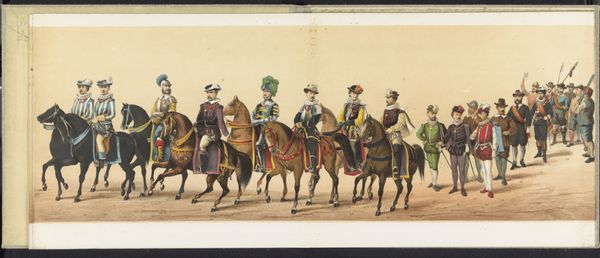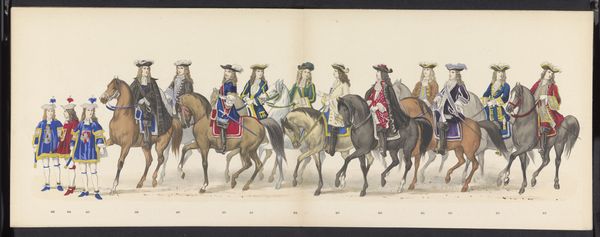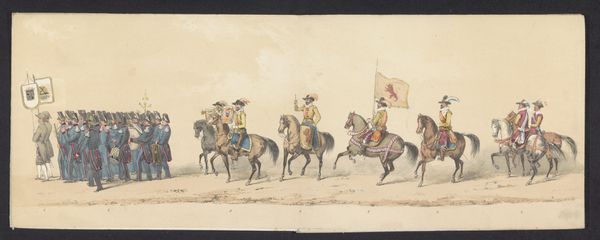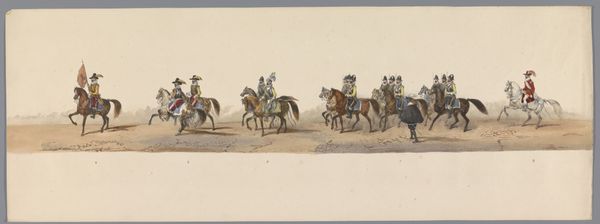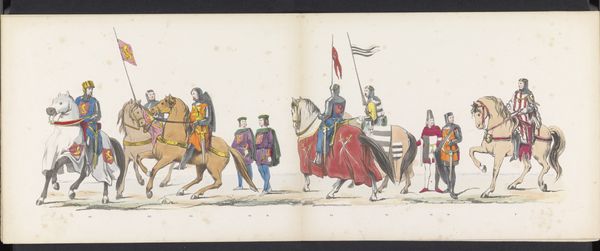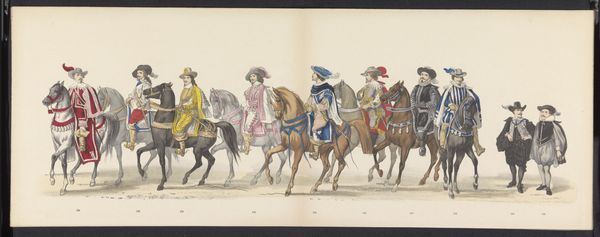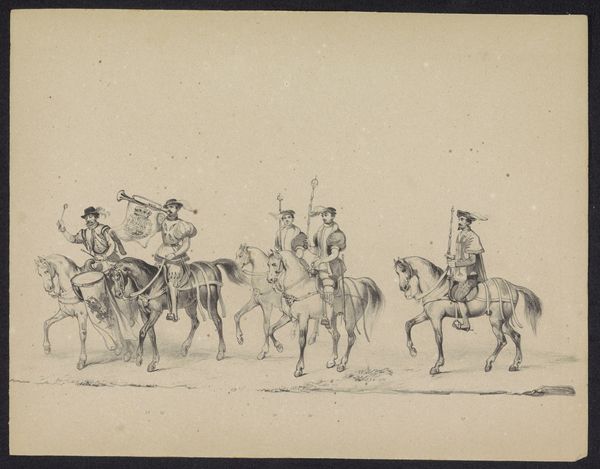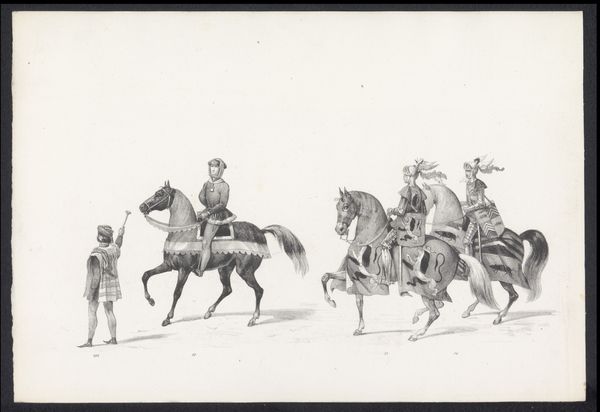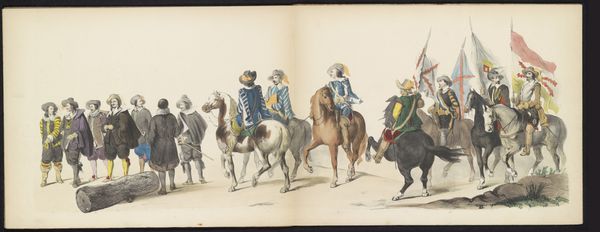
painting, watercolor
#
portrait
#
dutch-golden-age
#
painting
#
watercolor
#
coloured pencil
#
cityscape
#
watercolour illustration
#
genre-painting
#
history-painting
#
realism
Dimensions: height 280 mm, width 670 mm
Copyright: Rijks Museum: Open Domain
Curator: This watercolour piece, created in 1872, is titled "Optocht te Haarlem, 1872 (plaat 6)", attributed to Emrik & Binger. It depicts a procession scene in Haarlem. Editor: It's fascinating—a real air of staged formality. All those horses stepping in unison, the riders so stiff and proud. I'm curious about the materials used. It looks meticulously rendered. Curator: The use of watercolour and perhaps coloured pencil lends a certain delicacy to what is fundamentally a display of civic or military power. I imagine this piece offered viewers of the time a vision of historical grandeur, filtered through contemporary social values. Editor: I'm immediately drawn to the painstaking detail—you can almost feel the weight of the embroidered fabrics, the craftsmanship of the saddles, the care given to each individual horse. There's such skill embedded in portraying the materiality of their world, reflecting the resources and labour involved. Curator: Absolutely. This print was made after the Dutch Golden age and harks back to that era through carefully staged genre and historical scenes; this procession is idealized, perhaps mythologized. Consider its function: How might the artist or studio use imagery to evoke patriotism or civic pride through historical dress and imagery? Editor: The colours themselves speak of luxury and the importance of presentation—the rich blacks contrasted with gleaming whites. How the dyes were sourced, who manufactured them, these things matter in understanding how this image circulated, who could afford it, and what meanings its production process embedded. Curator: True. Its artistic interpretation also provides a lens through which we view social hierarchy and its historical reenactment. And what were those histories meant to imply at this period of emerging Dutch national identity? Editor: For me, it underlines that art is never detached from labour, that these idealized depictions rely on complex systems of material extraction, manufacture, and, ultimately, consumption by a specific audience. Curator: An insightful observation which highlights the relationship between imagery, its historical context, and the social narratives these pieces sought to endorse. Editor: Agreed, a powerful reminder that we're not just looking at art but encountering evidence of industry, skill, and social stratification materialized.
Comments
No comments
Be the first to comment and join the conversation on the ultimate creative platform.
